Syrian Arabic grammatical summary
Update 2023-08-27 — Changed transcription system to Library of Congress.
Update 2021-10-24 — Dual section added.
Update 2021-05-20 — Prepositions ʿa- and leʿand split into two list items.
Update 2021-02-06 — Images for place of articulation added.
Update 2021-01-18 — Phonology section expanded considerably.
Update 2021-01-03 — Presentation order standardized: translation, transcription, Arabic. Indefinite pronouns added. Various minor additions and edits.
Update 2020-12-29 — Hollow and doubled verbs added.
Update 2020-12-05 — mān- negation added. Minor readability improvements.
Update 2020-11-20 — Corrected spelling in Arabic script for numerals 11-19. Added subheading for auxiliary verbs.
updates
A pdf of this post for pretty printing can be found here.
This grammar is under construction. The
following topics are planned to be added:
- syllable structure
- exclamations(?)
- imperative
- gender
- adverbs
- the possessive exponent
- participles
- verbal noun
Introduction
This is a short pedagogical summary of the variety of Arabic spoken in the Damascus area in Syria. It is intended to be used for quick reference and overview for beginner to intermediate language learners. It is partially based on A Reference Grammar of Syrian Arabic (Cowell 2005 [1964], Georgetown University Press1) and Arabisch-syrische grammatik (Grotzfeld 1965, Harrasowitz), to which the reader is referred for detailed and comprehensive grammatical descriptions.
This grammar uses a Library of Congress’ system of transcription (see Phonology). Words and examples are presented in transcription, translation, and, space permitting, also in Arabic script.2 The Arabic script represents written vernacular as used in text messaging, advertisement, etc. There is considerable variation in vernacular Arabic orthography, especially in the extent to which Standard Arabic spelling is followed, and forms that differ from those presented here are therefore common.
Comparisons with Standard Arabic are made where relevant.
For corrections or suggestions on improvements, please contact the author at andreas.hallberg@sprak.gu.se.
Phonology
IPA symbols in square brackets are hyper-linked to sound samples from Wikipedia. Click on them to hear an example of the pronunciation.
Consonants
Compared to Standard Arabic, several consonants are missing in Syrian Arabic, namely the dentals th ث, dh ذ, and ẓ ظ; as well as q ق. Furthermore, j ج is in Syrian Arabic pronounced [ʒ], as opposed to the Standard Arabic affricate [ʤ].
Place and manner of articulation3
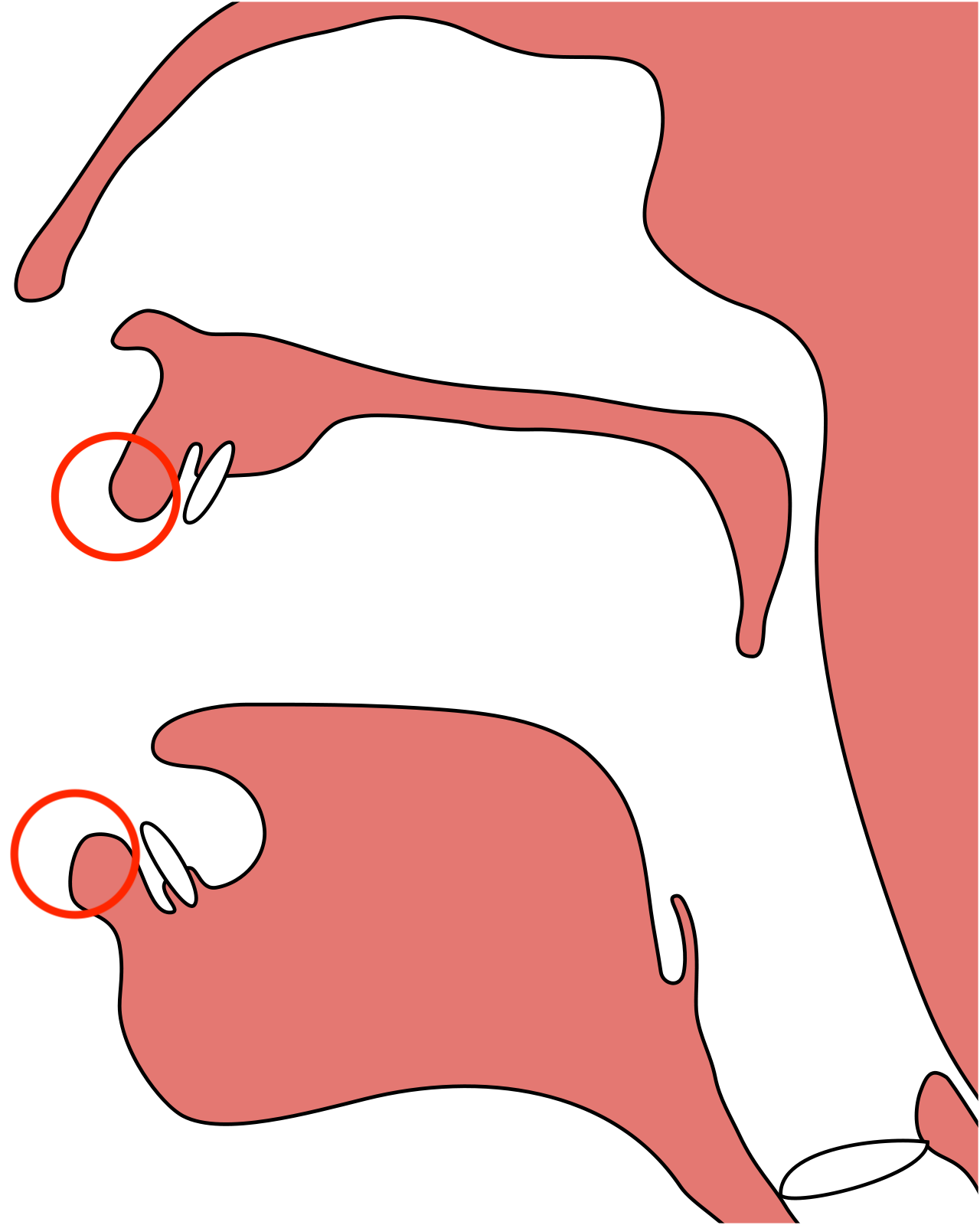 Labial |
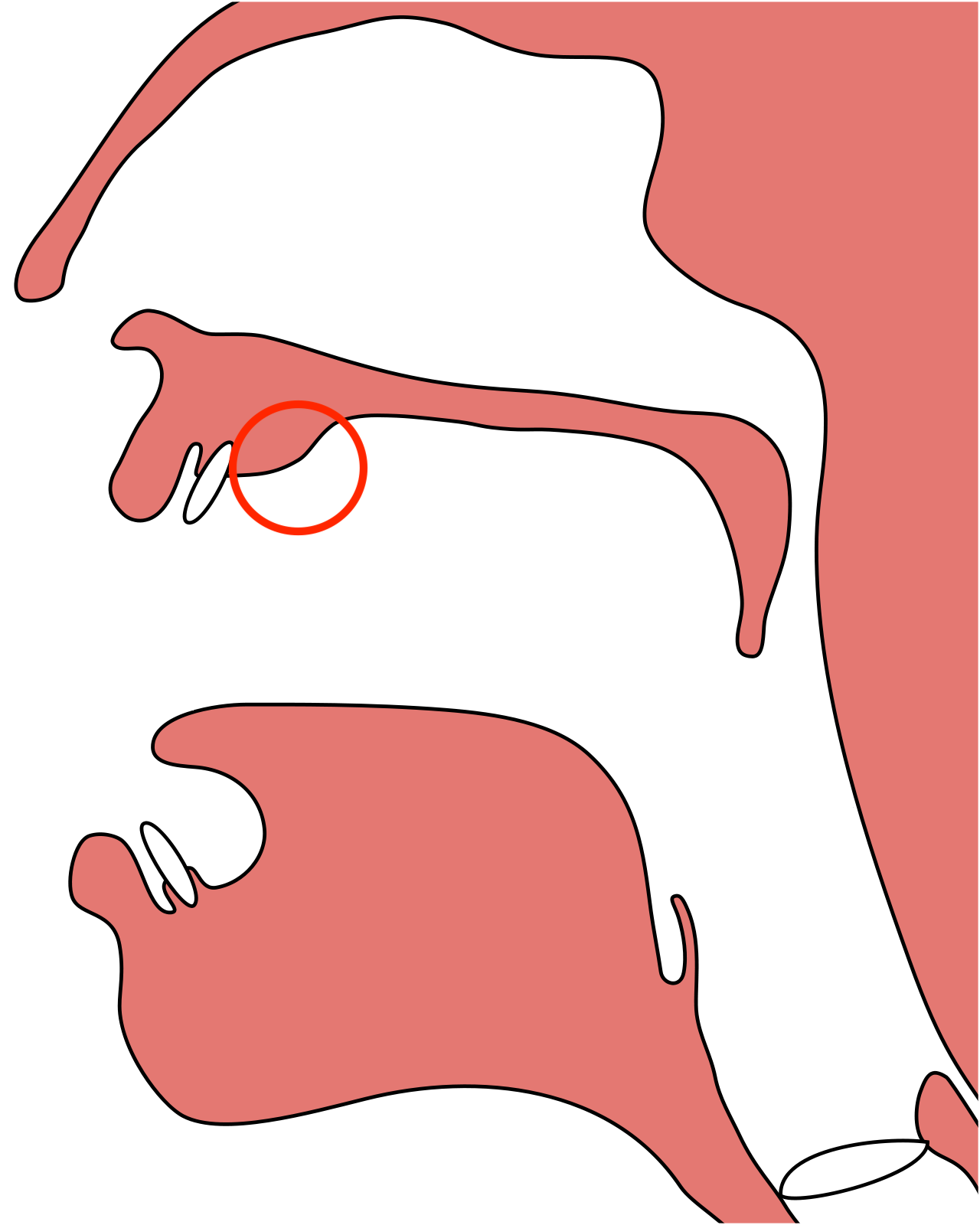 Alveolar |
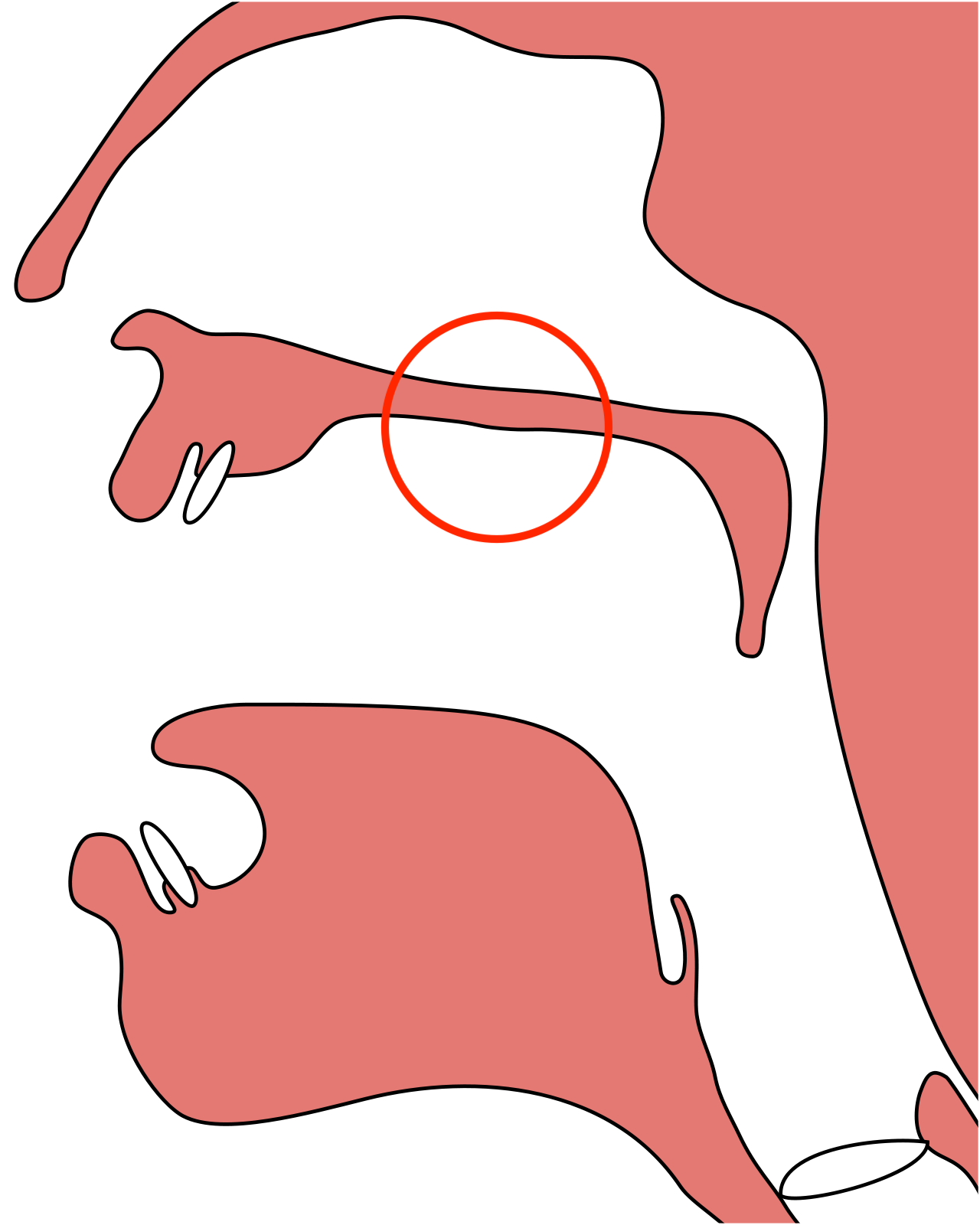 Palatal |
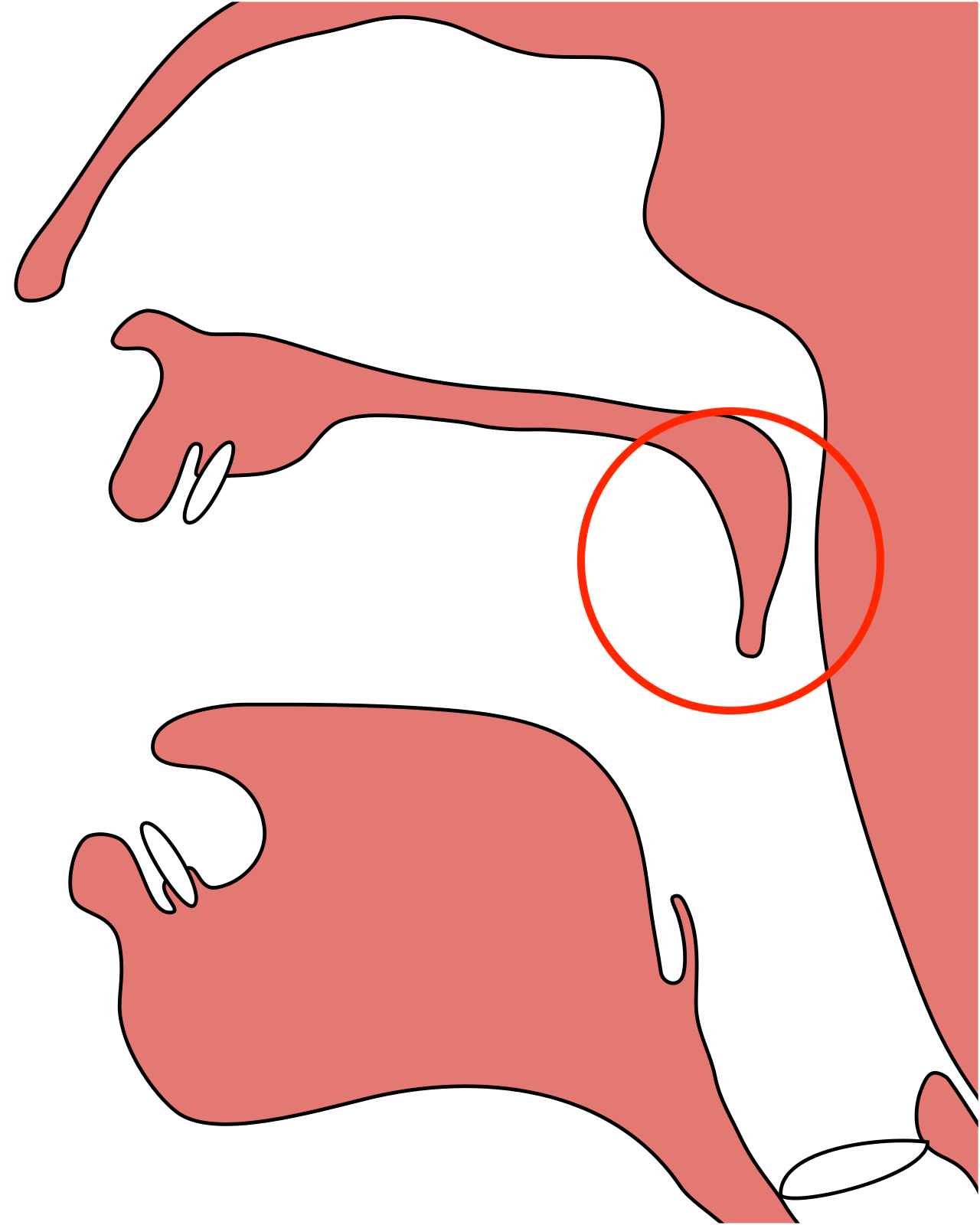 Velar/ Uvular |
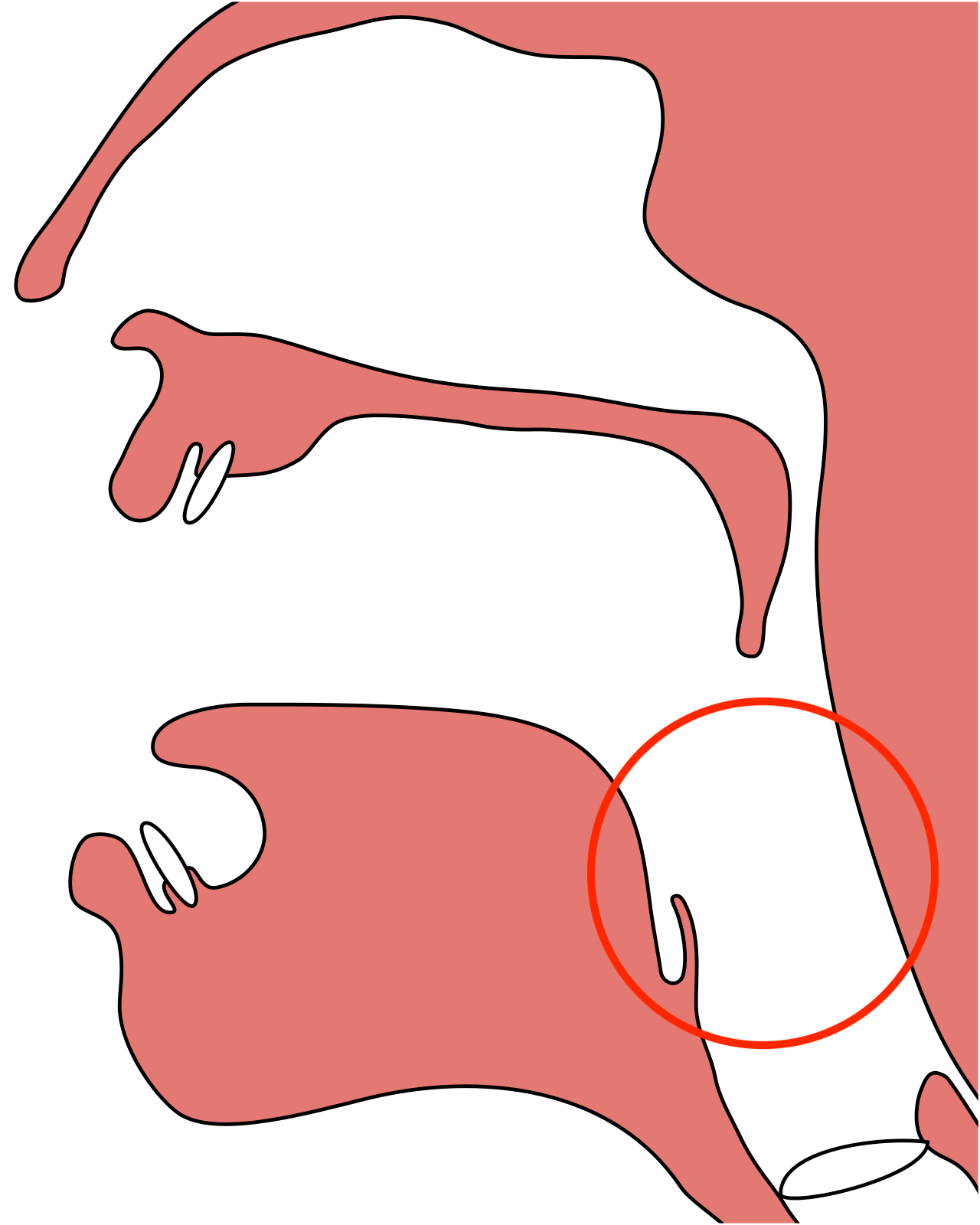 Pharyngal |
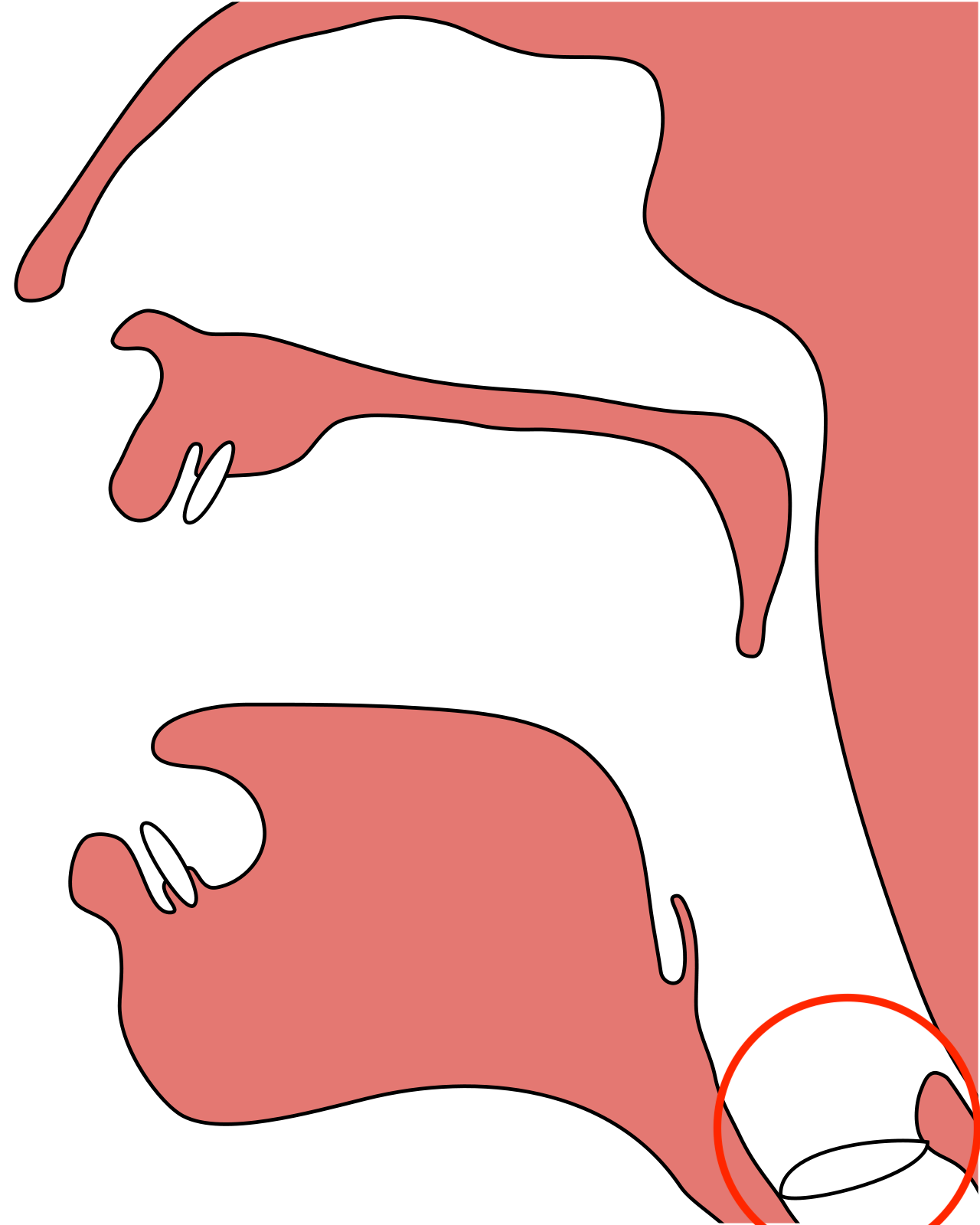 Glottal |
|
|---|---|---|---|---|---|---|
| Fricative | ||||||
| — voiced | j | gh | ʿ | |||
| — voiceless | f | kh | ḥ | h | ||
| Plosive | ||||||
| — voiced | b | d, ḍ | ||||
| — voiceless | t, ṭ | k | ʾ | |||
| Lateral | l | |||||
| Trill | r | |||||
| Nasal | m | n | ||||
| Sibilant | ||||||
| — voiced | z | |||||
| — voiceless | s, ṣ | |||||
| Semi-vowel | w | y |
The following consonants are used only in a few words:
- emphatic m (māmā ‘mum’)
- emphatic b (bāba ‘dad’)
- emphatic l (alla ‘God’)
- g (ergīle ‘water pipe’)
The emphasis distinction in m, b, and l is not reflected in the transcription employed here.
Pointers on pronunciation
| r | ر | [r] | Rolled r, as in Spanish. Pronounced emphatically [rˤ] when adjacent to a or another emphatic consonant (mara ‘wife’, rṣās ‘led’). |
| j | ج | [ʒ] | As in French journal. |
| ḥ | ح | [ħ] | Hissing h formed by tensioning the throat. |
| kh | خ | [x]/[χ] | As the German ach or (Castilian) Spanish jota. |
| gh | غ | [ɣ]/[ʁ] | As the French or German throaty r. |
| ʿ | ع | [ʕ] | Produced by using swolloing muscles to restrict the air flow. It is one of the most difficult sounds for language learners to produce. Learners often wrongly percieved as a vowel a. |
| ʾ | ء | [ʔ] | A stop and quick release of the air pressure by the vocal-cords, as the t in colloquial British better. |
| ṣ | ص | [sˤ] | Emphatic s. |
| ḍ | ض | [dˤ] | Emphatic d. |
| ṭ | ط | [tˤ] | Emphatic t. |
Emphatic consonants
Emphatic consonants (technically “pharyngalized”) are pronounced as their non-emphatic equivalents but with the back of the tongue raised, giving a darker, thicker sound. This affects the quality of surrounding vowels, most clearly heard in ā [æː] (as English bad) becoming a backed [ɑː] (as in English far).
Consonant length
All consonants have a short and a long variant. The long variant is transcribed as a doubled letter. Consonant length is a central part of Arabic phonology, often changing the meaning of a word (daras ‘he studied’ vs. darras ‘he taught’, ḥakat ‘she talked’ vs. ḥakkat ‘she scratched’).
For plosives (ʾ, b, d, ḍ, t, ṭ, k) the long variant is produced by briefly holding the air pressure before releasing it and producing the sound.
Consonant length is not indicated in the Arabic script. Only very rarely is it marked with the diacritic ـّ (shadda).
Vowels
| Short | Long | |||
|---|---|---|---|---|
| i | [i] | ī | [iː] | ي |
| e | [e]/[ə] | ē | [eː] | ي |
| u | [u] | ū | [uː] | و |
| o | [o] | ō | [oː] | و |
| a | [a]/[ɑ] | ā | [æː]/[ɑː] | ا |
Note:
-
The Arabic letters only represent long vowels. Short vowels are normally not indicated.
-
i and u occur primarily in word final position as part of inflections (bēt-i ‘my house’, byeʿmel-u ‘they do’).
-
The vowel here transcribes as e is pronounced
-
Short and long a is pronounced backed [ɑ] when adjacent to an emphatic consonant.
-
There are no diphthongs in Syrian Arabic. The Standard Arabic diphthongs ay and aw correspond in Syrian Arabic to the long vowels ē and ō respectively.
Word stress
Word stress in Syrian Arabic is largely predictable and corresponds with the rules of word stress in Standard Arabic. Word stress occurs on
- the last
- long vowel followed by consonant (darrasúu-na ‘they taught us’)
- short vowel followed by two consonants or a long consonant (darásna ‘we studied’, byedárres ‘he studies’)
- or else on the first vowel (dárasu ‘they studied’), excluding any prefix (u-dárasu ‘and they studied’).
Standard to Syrian Arabic phonological conversion rules
| aw | → | ō | yawm | → | yōm | day | يوم | ||
| ṣawt | ṣōt | sound/voice | صوت | ||||||
| ay | → | ē | bayn | → | bēn | between | بين | ||
| ṣabāḥ al-khayr | ṣbāḥ el-khēr | Good morning | صباح الخير | ||||||
| q | → | ʾ | daqīqa | → | daʾīʾa | minute | دقيقة | ||
| qalb | ʾalb | heart | قلب | ||||||
| ṭāriq | ṭāreʾ | Tariq (name) | طارق | ||||||
| ẓ | → | ḍ | ẓuhr | → | ḍuhr | noon | ضهر | ||
| ʾ | → | ø | masāʾ | → | masa | eavening | مسا | ||
| th | → | t | thalātha | → | tlāte | three | تلاتة | ||
| (s) | mathalan | → | masalan | for example | مثلا | ||||
| dh | → | d | dhahab | → | dahab | gold | دهب | ||
| (z) | idha | → | iza | if | اذا |
Loans from Standard Arabic, including foreign Arabic place names, often retain the Standard Arabic pronunciation. In such words, th and dh are pronounced s and z respectively. Some examples are:
| Syrian Arabic | Standard Arabic | ||
|---|---|---|---|
| saqāfe | thaqāfa | culture | ثقافة |
| ustāz | ustādh | teacher | أستاذ |
| demuqrāṭiyye | dimuqrāṭiyya | democracy | ديمقراطية |
| el-qurʾān | al-qurʾān | the Quran | القرآن |
| el-qāhira | al-qāhira | Cairo | القاهرة |
Pronouns
Personal pronouns
| Independent | Attached | متصل | منفصل | |||
|---|---|---|---|---|---|---|
| I | ana | ‑i | (‑ya) | ـي | انا | |
| you (m.s.) | enta | ‑ak | (‑k) | ـك | انت | |
| you (f.s.) | enti | ‑ik | (‑ki) | (ـكي) | ـك | انتي |
| he | huwwe | ‑o | (‑h) | (ـه) | ـو | هو |
| she | hiyye | ‑a | (‑ha) | ـها | هي | |
| we | neḥna | ‑na | ـنا | نحنا | ||
| you (pl.) | intu | ‑kon | ـكن | انتو | ||
| they | honnen | ‑on | (‑hon) | (ـهن) | ـن | هنن |
Forms in parenthesis are used with words with final vowel: aʿṭā-ki ‘he gave you (f.)’.
Attached pronouns are used for:
| possession | ktāb‑o | his book | كتابو |
| prepositional complements | maʿ‑o | with‑him | معو |
| direct objects | katabt‑o | I wrote it | كتبتو |
| indirect objects | katabt‑l‑o | I wrote for him | كتبتلو |
The connective -l- ‘for’ for indirect objects may take the form -el- to prevent consonant clusters: katabt‑el‑kon ‘I wrote for you (pl.)’. A direct object may then be added with the word yā-: katabt-l-ak yā-ha ‘I wrote it (fem.) for you’.
Demonstrative pronouns
| Close | Distant | بعيد | قريب | |
|---|---|---|---|---|
| m.s. | hāda | hadāk(e) | هداك | هادا |
| f.s | hāy | hadīk(e) | هديك | هاي |
| pl. | hadōl(e) | hādōlīk | هدوليك | هدول |
Note:
-
Several forms have a stylistic variant with final e.
-
hāda has a shortened form, hād, used only at the end of phrases: shū hād? ‘What is this?’.
-
The distant plural has several variants not listed above, including hadōk, hadenk, and hadenken.
Indefinite pronouns
| ḥada | someone/anyone | حدا |
| shi | something/anything | شي |
Nouns
Nouns are inflected for number and definiteness, and most animate nouns (referring to humans or animals) are also inflected for gender.
Plural
There are four ways to form plural: irregular, regular masculine, regular feminine, and general human:
| Singular | Plural | جمع | مفرد | |||
|---|---|---|---|---|---|---|
| Irrergula | bēt | buyūt | house | بيوت | بيت | |
| Regular masculine | ‑īn | muslem | muslemīn | muslim | مسلمين | مسلم |
| Regular feminine | ‑āt | sheghle | sheghlāt | thing | شغلات | شغلة |
| General human | ‑(iyy)e | ʿerāqi | ʿerāqiyye | Iraqi | عراقية | عراقي |
Dual
The noun has three forms of number inflection: singular, plural, and dual. (The adjective, verb, and pronoun have no dual forms.) The dual form is used to indicate specifically two of something. It is formed by adding the ending -ēn to the singular (-tēn for feminine formed with -e/-a).
| Singular | Dual | المثنى | مفرد | |||
|---|---|---|---|---|---|---|
| Masculine | ‑ēn | walad | waladēn | boy | ولدين | ولد |
| Feminine | ‑tēn | sāʿa | sāʿatēn | hour | ساعتين | ساعة |
The dual is used only in contexts where the precise number is important:
| ʿinna sāʿatēn bas | We only have two hours. |
| ash-shaʿʿa fī-ha ghurfatēn u-maṭbakh | The apartment has two rooms and a kitchen. |
Otherwise the plural is used:
| rāḥu aḥmad u-rafīʿu ʿa-buyūt-un | Ahmad and his friend went home [to their houses (pl.)] |
| mā ʿinna wlād, bas banāt, rīm w-raniya | we don’t have any boys, only girls (pl.), Rim and Rania |
The dual is avoided on nouns with attached pronouns, except for pairwise occurring body parts. The plural follow by an explicit itnēn ‘two’ is used instead:
| akhwāt-i l-itnēn | my two sisters | اخواتي الاتنين |
| sayārāt-u l-itnēn | his two cars | سياراتو الاتنين |
| ghassili īdē-ki | wash your hands | غسل ايديكي |
Note:
-
When used with an attached pronoun, the n in the dual ending is dropped.
īd ‘hand’ → īdēn ‘two hands’ → īdēk ‘your two hands’.
Prepositions
| ʿa-/ʿalē- | to (place) | ع/عليـ |
| ʿala/ʿalē‑ | on | على/عليـ |
| ʿand | with, at | عند |
| barrāt | outside | برات |
| bēn | between | بين |
| bēn/bēnāt‑ | among | بين/بيناتـ |
| bi‑/fī‑ | in, at | بـ/فيـ |
| fōʾ | above | فوق |
| ḥadd | next to | حد |
| juwwāt | inside | جوات |
| la‑/el‑ | for (ownership) | لـ/الـ |
| leʿand | to (person) | لعند |
| maʿ | with | مع |
| men/menn- | from | من/منـ |
| taḥt | below | تحت |
| ʾuddām | in front of | قدام |
| wara | behind | ورا |
Note:
-
For the prepositions with two alternate forms, the first is used with nouns and the second with pronouns:
bi‑l‑bēt in the house بالبيت fī‑h in it فيه
Verbs
Inflection
| Non-past | Past | المضارع | الماضي | |
|---|---|---|---|---|
| I | e‑ktob | katab‑t | اكتب | كتبت |
| you (ms.) | t(e)‑ktob | katab‑t | تكتب | كتبت |
| you (fs.) | t(e)‑ktob‑i | katab‑ti | تكتبي | كتبتي |
| he | ye‑ktob | katab | يكتب | كتب |
| she | t(e)‑ktob | katab‑et | تكتب | كتبت |
| we | n(e)‑ktob | katab‑na | نكتب | كتبنا |
| you (pl.) | t(e)‑ktob‑u | katab‑tu | تكتبو | كتبتو |
| they | ye‑ktob‑u | katab‑u | يكتبو | كتبو |
The pronoun is often omitted. The e in parenthesis is omitted on stems beginning with a single consonant t-shūf-i ‘you (fs.) see’.
The non-past verb form is preceded by one of the following:
| b‑ | habitual, generalities | بـ |
| ʿam | ongoing (progressive) | عم |
| ḥa‑/raḥ | future | حـ/رح |
| lāzim | ‘have to’ | لازم |
| auxiliary verb |
Note:
-
For 1s, the initial letter alif ا is normally omitted when preceded by b: bektob بكتب.
-
For 1pl. the b- prefix is partially assimilated and pronounced as m: mnektob. This is often reflected in orthography: منكتب.
-
Some speakers combine b- and ʿam: ʿam b-yektob.
Hollow verbs
Hollow verbs have a long vowel in the middle of the stem. They are of three types, each with different middle vowel in non-past tense: 1) ū, 2) ī, and 3) ā. The inflection of the three types does not differ in past tense, where the middle long vowel is invariably ā, reduced to e in past tense in forms with consonantal suffixes (1s, 2ms, 2mf,1pl, and 2pl).
-
Middle ū (rāḥ ‘went’):
Non-Past Past المضارع الماضي I e‑rūḥ reḥ‑t اروح رحت you (ms.) t‑rūḥ reḥ‑t تروح رحت you (fs.) t‑rūḥ‑i reḥ‑ti تروحي رحتي he ye‑rūḥ rāḥ يروح راح she t‑rūḥ rāḥ‑et تروح راحت we n‑rūḥ reḥ‑na نروح رحنا you (pl.) t‑rūḥ‑u reḥ‑tu تروحو رحتو they ye‑rūḥ‑u rāḥ‑u يروحو راحو Some other frequent verbs of this type are kān ‘was’, ʾāl ‘said’, rāḥ ‘went’, shāf ‘saw’/’met’, ʾām ‘stood up’, and māt ‘died’.
-
Middle ī (ṣār ‘became’):
Non-Past Past المضارع الماضي I e‑ṣīr ṣert اصير صرت you (ms.) t‑ṣīr ṣert تصير صرت you (fs.) t‑ṣīr‑i ṣert‑i تصيري صرتي he ye‑ṣīr ṣār يصير صار she t‑ṣīr ṣār‑et تصير صارت we n‑ṣīr ṣer‑na نصير صرنا you (pl.) t‑ṣīr‑u ṣer‑tu تصيرو صرتو they ye‑ṣīr‑u ṣār‑u يصيرو صارو Some other frequent verbs of this type are ʿāsh ‘lived’, jāb ‘fetched’, bāʿ ‘sold’. and dār ‘turned’.
-
Middle ā (nām ‘slept’):
Non-Past Past المضارع الماضي I e‑nām nem‑t انام نمت you (ms.) t‑nām nem‑t تنام نمت you (fs.) t‑nām‑i nemt‑i تنامي نمتي he ye‑nām nām ينام نام she t‑nām nām‑et تنام نامت we n‑nām nem‑na ننام نمنا you (pl.) t‑nām‑u nem‑tu تنامو نمتو they ye‑nām‑u nām‑u ينامو نامو Some other frequent verbs of this type are khāf ‘was frightened’ and ghār ‘was jealous’.
Doubled verbs
Doubled verbs have a stem ending in a lengthened (doubled) consonant. In past tense forms with consonantal suffixes, ē is added.
Ḥass ‘felt’:
| Non-Past | Past | المضارع | الماضي | |
|---|---|---|---|---|
| I | e‑ḥess | ḥassē‑t | احس | حسيت |
| you (ms.) | t‑ḥess | ḥassē‑t | تحسي | حسيت |
| you (fs.) | t‑ḥess‑i | ḥassē‑ti | تحس | حسيتي |
| he | y‑ḥess | ḥass | يحس | حس |
| she | t‑ḥess | ḥass‑et | تحس | حست |
| we | n‑ḥess | ḥassē‑na | نحس | حسينا |
| you (pl.) | t‑ḥess‑u | ḥassē‑tu | تحسو | حسيتو |
| they | ye‑ḥess‑u | ḥass‑u | يحسو | حسو |
Some other frequent verbs of this type are radd ‘answered’ and ḍall ‘remained’.
Auxiliary verbs
The main verb may be preceded by an auxiliary verb. Both the auxiliary and the main verb are inflected for person:
| beddo yektob | ‘he wants to write’ | بدو يكتب |
| byeḥebb yektob | ‘he likes to write’ | بيحب يكتب |
| kān yektob | ‘he was writing’ | كان يكتب |
| ṣār yektob | ‘he began to write’ | صار يكتب |
kān ‘was’
The verb kān ‘was’ is used
-
to make a verb-less clause past or future tense:
aḥmad kān ṭāleb Ahmad was a student aḥmad ḥa‑yekūn ṭāleb Ahmad will be a student -
to express a past ongoing (progressive) event:
aḥmad kān (ʿam) yedros Ahmed was studying
It is a hollow verb with middle ū in non-past tense:
| Non-past | Past | المضارع | الماضي | |
|---|---|---|---|---|
| I | e‑kūn | ken‑t | اكون | كنت |
| you (ms.) | t‑kūn | ken‑t | تكون | كنت |
| you (fs.) | t‑kūn‑i | kent‑i | تكوني | كنتي |
| he | ye‑kūn | kān | يكون | كان |
| she | t‑kūn | kān‑et | تكون | كانت |
| we | n‑kūn | ken‑na | نكون | كنا |
| you (pl.) | t‑kūn‑u | ken‑tu | تكونو | كنتو |
| they | ye‑kūn‑u | kān‑u | يكونو | كانو |
Pseudo-verbs
| bedd‑ | want | بد |
| ʿand‑ | has | عند |
| fī | there is | في |
The pseudo-verbs are negated as verbs with mā (see Negation) but do not follow verbal person and tense inflection. bedd‑ and ʿand- are inflected for person with attached pronouns, like nouns, while fī is not inflected:
| bedd-a ktāb | she wants a book [her wish is a book] | بدها كتاب |
| ʿand-a ktāb | she has a book [with her is a book] | عندها كتاب |
| fī ktāb | there is a book | في كتاب |
Pseudo-verbs are inflected for tense with an auxiliary kān:
| kān ʿand-a ktāb | She had a book. | كان عندها كتاب |
| ḥa-yekūn ʿand-a ktāb | She will have a book. | حيكون عندها كتاب |
Question words
| shū | what | شو |
| mīn | who | مين |
| ēmta | when | ايمتى |
| kīf/shlōn | how | كيف/شلون |
| wēn | where | وين |
| minnen | from where | منين |
| lawēn | whereto | لوين |
| lēsh | why | ليش |
| addēsh | how much | قديش |
| kam | how many | كم |
| ayyi/anu | which | اي/انو |
Question words are normally clause-inital, and may be preceded by a preposition:
| maʿ mīn ʿam teḥki? | ‘Who are you talking to?’ | مع مين عم تحكي؟ |
Wēn and kīf may take attached pronouns:
| wēn-ak? | Where are you? | وينك؟ |
| kīf-ak? | How are you? | كيفك؟ |
Yes/no-question are formed with rising intonation. The Standard Arabic particle hal is in Syrian only used for rhetoric questions.
Negation
Syrian Arabic has three main forms of negation:
| mā | ما | verbs |
| mū | مو | non-verbal clauses |
| lā | لا | imperative |
For declarative clauses, in effect, mū is only used to negate a verbless clauses in present tense, otherwise the mā is used:
| Verbal clause | Verbless (“is”) clause | |
|---|---|---|
| Ahmed is studying. | Ahmed is a student. | |
| Past | aḥmad mā daras | aḥmad mā kān ṭāleb |
| أحمد ما درس | أحمد ما كان طالب | |
| Present | aḥmad mā byedrus | aḥmad mū ṭāleb |
| أحمد ما بيدرس | أحمد مو طالب | |
| Future | aḥmad mā ḥa‑/raḥ yedrus | aḥmad mā ḥa‑/raḥ yekūn ṭāleb |
| أحمد ما حـ/رح يدرس | أحمد ما حـ/رح يكين طالب |
mā-n-
mā‑ followed by a connecting ‑n‑ and an attached pronoun (mān‑i, mān‑ak, mān‑ik, etc.) may be used to reply in the negative to a statement, question, or implication. For example,
| mā‑n‑i juʿān | I am not hungry | ماني جوعان |
can be used to answer someone saying that you are hungry, asking whether you are hungry, or urging you to eat.
Numerals 1–100
The independent form of the numeral in the table below is used when the numeral stands by itself and is not followed by a noun, and the counting-form is used when the numeral is followed by counted a noun: tlāte ‘three’, but tlatt ewlād ‘three boys.’
| Independent | Counting | مضاف | غير مضاف | |
|---|---|---|---|---|
| 1 | wāḥed (m.)/waḥde (f.) | واحد/وحدة | ||
| 2 | etnēn (m.)/tentēn (f.) | اتنين/تنتين | ||
| 3 | tlāte | tlatt | تلات | تلاتة |
| 4 | arbaʿa | arbaʿ | أربع | أربعة |
| 5 | khamse | khams | خمس | خمسة |
| 6 | sette | sett | ست | ستة |
| 7 | sabʿa | sabʿ | سبع | سبعة |
| 8 | tmāne | tman | تمان | تمانة |
| 9 | tesʿa | tesʿ | تسع | تسعة |
| 10 | ʿashara | ʿashar | عشر | عشرة |
| 11 | eddaʿsh | eddaʿshar | ادعشر | ادعش |
| 12 | eṭnaʿsh | eṭnaʿshar | اطنعشر | اطنعش |
| 13 | tlaṭaʿsh | tlaṭaʿshar | تلاطعشر | تلاطعش |
| 14 | arbaʿṭaʿsh | arbaʿṭaʿshar | اربعطعشر | اربعطعش |
| 15 | khamasṭaʿsh | khamsṭaʿshar | خمسطعشر | خمسطعش |
| 16 | seṭṭaʿsh | seṭṭaʿshar | سطعشر | سطعش |
| 17 | sabʿaṭaʿsh | sabʿaṭaʿshar | سبعطعشر | سبعطعش |
| 18 | tmanṭaʿsh | tmanṭaʿshar | تمانطعشر | تمانطعش |
| 19 | tesʿaṭaʿsh | tesʿaṭaʿshar | تسعطعشر | تسعطعش |
| 20 | ʿeshrīn | عشرين | ||
| 30 | tlātīn | تلاتين | ||
| 40 | arbaʿīn | اربعين | ||
| 50 | khamsīn | خمسين | ||
| 60 | settīn | ستين | ||
| 70 | sabʿīn | سبعين | ||
| 80 | tmānīn | تمانين | ||
| 90 | tesʿīn | تسعين | ||
| 100 | miyye | mīt | مية |
Note:
-
Except for 1 and 2, numerals are not inflected for gender, as opposed to Standard Arabic.
-
1–2 are used only for emphasis or contrast, or when ordering in restaurants and the like (etnēn shāy ‘two tea’, see also Dual). Otherwise, the lone noun in singular or dual is used (ktāb ‘[a/one] book’; ktabēn ‘two books’). 1 and 2 are the only numerals that inflect for gender.
-
3–10 have a special form with a final -t when used with one of three following nouns:
eyyām days (khamst eyyam five days) eshhur months (khamst eshhur ‘five months’) ālāf thousands (ʿashart ālāf ‘ten thousand’) -
For 3–10, the counted noun is in the plural: tlatt kutub ‘three books’, and for numerals above 10, it is in the singular: iddaʿashar ktāb ‘eleven book[s]’.
-
11—19 are constructed from the counting form of the unit number and the ending ‑ṭaʿsh, with irregularities in 11, 12, and 15.
-
Decades (20, 30, etc.) are constructed from the counting form of the unit number and the ending ‑īn, with only 20 having an irregular form. In complex numbers, the unit in independent form appears before the decades with the two parts connected with u‑ ‘and’: sabʿa u‑tlātīn, ‘thirty‑six’.
-
For numbers above one hundred there is no counting form for 100: miyye u‑tlāte kelime ‘103 words’.
-
Available as pdf on https://ia801609.us.archive.org/31/items/AReferenceGrammarOfSyrianArabic_201704/A_Reference_Grammar_of_Syrian_Arabic_text.pdf. ↩
-
For an overview of the Arabic script, see The Arabic Writing System (available for download at http://andreasmhallberg.github.io/documents/). ↩
-
Images (modified) created by User:ish shwar (original .png deleted), .svg by Rohieb, CC BY-SA 3.0 http://creativecommons.org/licenses/by-sa/3.0/, via Wikimedia Commons ↩
